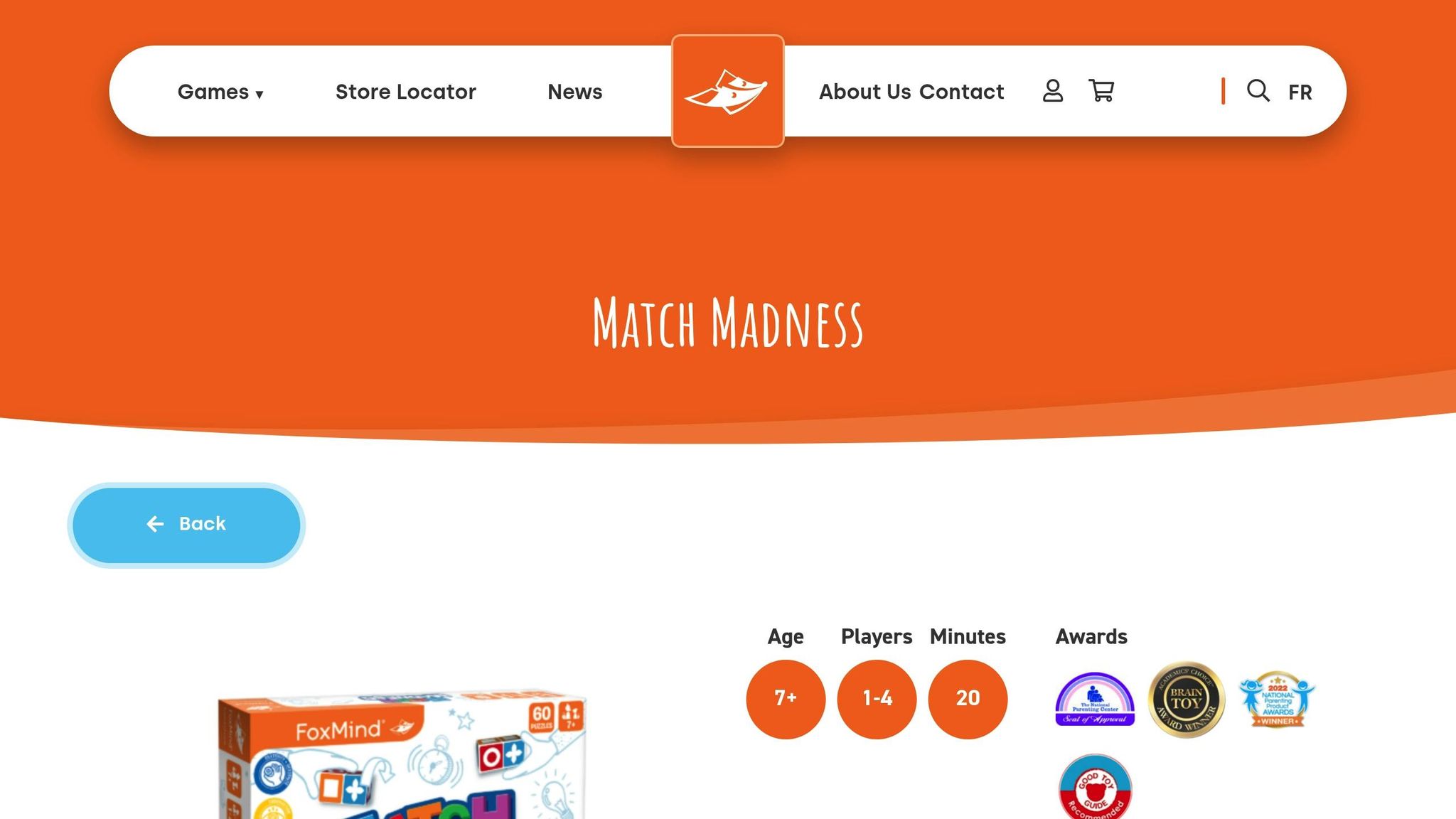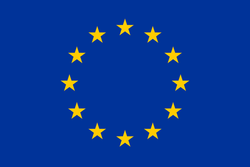Discover the Best Board Games for Every Player

Match Madness vs. Qwirkle: Puzzle Game Comparison
Match Madness and Qwirkle are two popular puzzle games, but they offer completely different experiences. Here’s a quick breakdown to help you decide:
- Match Madness: Fast-paced, real-time gameplay where players race to match patterns using colorful blocks. Perfect for quick thinkers who enjoy energetic competition.
- Qwirkle: Turn-based strategy game focused on creating lines of matching shapes and colors with wooden tiles. Ideal for those who prefer thoughtful, deliberate play.
Quick Comparison
| Feature | Match Madness | Qwirkle |
|---|---|---|
| Pace | Fast and real-time | Slow and turn-based |
| Skills Needed | Quick thinking, spatial skills | Strategic planning |
| Gameplay Style | Competitive racing | Thoughtful tile placement |
| Setup Time | ~2 minutes | ~3-4 minutes |
| Components | Plastic blocks, cards | Wooden tiles, score pad |
Choose Match Madness for high-energy fun or Qwirkle for a calm, strategy-driven experience. Both games are available at Brain-Games.lv/en/.
Basic Game Information
Match Madness Basics

Match Madness is all about speed and sharp thinking. Players race to spot and recreate patterns, making it a game that tests quick reflexes and decision-making skills. It's a fast-moving challenge that keeps you on your toes.
Qwirkle Basics
Qwirkle, on the other hand, is a tile-placement game focused on matching colors and shapes. Players take turns placing tiles to build lines and score points, requiring careful thought and strategic planning.
With these two games offering such different styles of play, let’s dive into their mechanics to see how they work.
Related video from YouTube
How to Play
Here’s a breakdown of how each challenge works, building on the basics of the game.
Playing Match Madness
In Match Madness, the goal is to replicate patterns as quickly as possible. Each player gets five double-sided blocks and a card holder. When a challenge card is revealed, players race to arrange their blocks to match the pattern on the card. You can flip and rotate the blocks to get the right configuration. The first player to recreate the pattern correctly wins the challenge card.
Scoring:
- First to finish: 3 points
- Second to finish: 2 points
- Third to finish: 1 point
Playing Qwirkle
In Qwirkle, players start with six tiles, each showing one of six shapes in one of six colors. On your turn, place one or more tiles in a line, making sure they share the same color or shape. You score 1 point for every tile in the line - and if you complete a Qwirkle (a line of six tiles), you earn a 6-point bonus.
Main Rule Differences
Here’s how the two games differ in gameplay:
| Aspect | Match Madness | Qwirkle |
|---|---|---|
| Turn Structure | Everyone plays at once | Players take individual turns |
| Time Pressure | High - speed matters | None - focus on strategy |
| Scoring Method | Based on speed (1–3 points) | Points per tile in a line |
| Win Condition | Most points after all cards | Highest score when tiles run out |
| Player Interaction | Direct competition | Indirect competition |
Match Madness is all about quick thinking and spatial skills, making it a great pick for fast-paced, energetic gameplay. On the other hand, Qwirkle rewards thoughtful planning and pattern recognition, perfect for those who enjoy a slower, more strategic challenge.
What's in the Box
Match Madness Parts
Match Madness is designed for quick play and easy setup, featuring:
- 20 double-sided pattern blocks (4 sets of 5 blocks each)
- 60 challenge cards with a variety of patterns
- 4 card holders, one for each player
- 1 sand timer (1-minute duration)
- A rulebook with clear instructions
Setup time is about 2 minutes.
Qwirkle Parts
Qwirkle offers a classic setup with:
- 108 wooden tiles (6 shapes in 6 colors)
- A drawstring bag for tile storage
- A score pad and pencil
- A straightforward rulebook
Players draw tiles from the bag, starting with 6 tiles each. Setup takes roughly 3-4 minutes.
Parts and Setup Differences
| Feature | Match Madness | Qwirkle |
|---|---|---|
| Component Type | Plastic blocks and cards | Wooden tiles |
| Total Pieces | 84 pieces (blocks, cards, holders) | 108 tiles |
| Player Materials | Individual sets (blocks + holder) | Shared pool of tiles |
| Storage Solution | Card box with insert | Drawstring bag |
| Setup Time | ~2 minutes | ~3-4 minutes |
These differences in materials and setup reflect the unique gameplay styles of each game. Match Madness focuses on speed and pattern recognition, while Qwirkle emphasizes strategy and planning. The distinct components and preparation times set the tone for the challenges each game offers, as we'll explore further.
sbb-itb-1ed942f
Game Depth
The strategic aspects of each game go beyond their basic mechanics, offering distinct experiences for players.
Match Madness Decisions
In Match Madness, players rely on quick spatial reasoning and pattern recognition. Success comes from acting fast, with the focus on immediate execution rather than long-term strategies.
Qwirkle Decisions
Qwirkle emphasizes thoughtful tile placement. Players must balance scoring in the moment with setting up future opportunities, all while keeping an eye on their opponents' moves and potential strategies.
Decision Complexity Comparison
Here's a breakdown of how decision-making differs between the two games:
| Aspect | Match Madness | Qwirkle |
|---|---|---|
| Time Pressure | Real-time: Requires quick action | Turn-based: No time constraints |
| Primary Skills | Quick pattern recognition | Strategic thinking and planning |
| Decision Window | Instant choices | Time to evaluate each turn |
| Flexibility | Limited by speed | Driven by the evolving board state |
| Opponent Interaction | Compete through speed | Block and counter opponents' moves |
| Strategic Focus | Execution-focused | Layered and positional strategy |
Match Madness challenges players to think fast and act on visual cues, while Qwirkle offers a more methodical, strategy-driven gameplay experience through careful decision-making and board control.
How Games Feel to Play
Now that we've broken down the mechanics and components, let's dive into how these games feel during play. The gameplay of these two puzzle games creates completely different vibes.
Match Madness Play Style
Match Madness is all about fast-paced action. Players compete in real time, racing to solve their puzzles as quickly as possible. The game thrives on the thrill of the moment, with everyone frantically adjusting blocks and checking challenge cards.
The time pressure brings a burst of energy, with:
- Quick reactions driving the action
- Shouts and laughter filling the room
- A sense of urgency keeping everyone on edge
- Moments of triumph or frustration adding to the drama
This creates a high-energy, shared experience that mirrors the real-time challenges we've discussed.
Qwirkle Play Style
Qwirkle, on the other hand, offers a slower, more thoughtful experience. Players take their time to study the board, plan their moves, and carefully place their tiles. It’s a calm, yet mentally engaging atmosphere, where players remain involved even during others' turns.
The turn-based structure encourages:
- Casual socializing between moves
- Strategic discussions about the game
- Admiration for clever plays
- Friendly rivalry through tactical decisions
This slower pace allows for conversation and reflection while still keeping the competitive edge alive.
Play Style Differences
Here’s a quick comparison of the two games:
| Aspect | Match Madness | Qwirkle |
|---|---|---|
| Game Flow | Fast and intense bursts | Slow and steady progression |
| Social Dynamic | Shared excitement in real time | Structured, turn-based play |
| Mental State | Alert and reactive | Analytical and strategic |
| Physical Energy | High-energy and active | Relaxed but focused |
| Player Interaction | Limited during play, lively between rounds | Turn-based, conversational |
| Tension Level | Peaks during rounds, relaxed between | Consistent, moderate tension |
| Play Session Feel | Like a sprint | Like a marathon |
Match Madness is perfect for players who love quick thinking and immediate results, while Qwirkle is better suited for those who enjoy a more strategic, deliberate approach. Each offers a unique gaming experience depending on your mood.
Which Game to Choose
Deciding between these two games? It all comes down to your group's preferences: the fast-paced action of Match Madness or the more deliberate, strategy-driven play of Qwirkle.
When to Choose Match Madness
If your group loves energetic, fast-paced games, Match Madness is the way to go. Its real-time competition adds a lively vibe, making it a hit for game nights and social events.
When to Choose Qwirkle
For those who enjoy games that require careful thought and planning, Qwirkle is an excellent choice. Its slower pace encourages strategic moves, creating a relaxed, thoughtful gaming experience.
Purchase Guide
Use the table below to find where to buy and what support is offered:
| Game | Available At | Support Guarantee |
|---|---|---|
| Match Madness | Brain-Games.lv/en/ | Lifetime component replacement |
| Qwirkle | Brain-Games.lv/en/ | 2-week exchange guarantee |
Pick the game that matches your group's vibe and enjoy!
Conclusion
Match Madness and Qwirkle shine in their own unique ways. Match Madness brings fast-paced excitement with its real-time puzzle-solving gameplay, while Qwirkle focuses on thoughtful, tactical tile placement for those who enjoy strategic challenges.
These games cater to different gaming vibes. Match Madness is perfect for lively party settings, while Qwirkle is ideal for sessions that call for careful planning and strategy. Your choice boils down to what you’re in the mood for: quick-thinking action or a more deliberate, strategic experience.
Both games are available at Brain-Games.lv/en/. If you’re after high-energy fun, Match Madness is the way to go. For a game that rewards patience and planning, Qwirkle is a solid pick.
Each of these games offers something special - Match Madness for adrenaline-filled game nights and Qwirkle for engaging, strategy-focused play.






